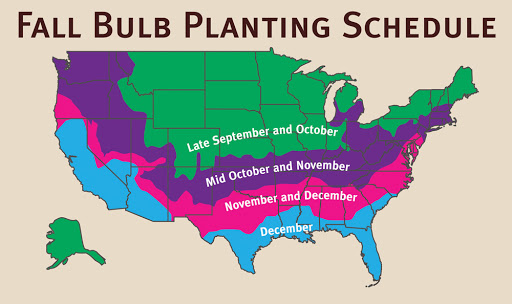I am a landscape designer and have been purchasing 1000's of spring flowering bulbs from A.D.R. Bulbs for 100's of clients in the last 20 years. The bulbs have always been of top quality and if there were any problems, they have been quick to rectify. My orders are often complicated with many varieties and different amounts and they have always filled and delivered everything on time with the best customer care and attention to detail. The pictures in their catalog and website are beautiful. I have visited their facility in NY and was impressed with all their handling equipment and organization. I would highly recommend A.D.R. Bulbs to anyone in the wholesale trade who wants to purchase quality bulbs and work with genuinely nice people.
Nancy Greenlee
, From The Ground Up
« Previous Plant | Next Plant »
Tulipa Triumph 'Carnaval de Rio'
Tulip
Carnaval de Rio is a Triumph tulip, known for its large, white petals streaked with deep ruby-red flames and hints of yellow. It blooms in mid-spring, standing on sturdy stems that reach 16 to 24 inches.
Flowering in mid-to-late spring, this variety features sturdy stems, making it ideal for borders and container plantings. Triumph tulips are celebrated for their durability and adaptability, excelling in both garden landscapes and forced indoor displays.
236.50
Tulipa Calculator
When should I plant Tulipa Triumph 'Carnaval de Rio'?

Growing and Maintenance Tips for Tulipa Triumph 'Carnaval de Rio'
Planting: Plant in fall when soil temperatures drop below 55°F. Set bulbs 6–8 inches deep with the pointed end up. Triumph tulips adapt well to borders, containers, and large-scale plantings thanks to their uniform habit and wide color range.
Spacing: Space bulbs 4–6 inches apart. For a cohesive display, plant in groups of 10 or more—ideal for both solid color blocks and curated mixes.
Light: Full sun encourages strong, upright stems and bold color. While light shade is tolerated, performance is best with at least 6 hours of direct light.
Soil: Provide well-drained, neutral to slightly acidic soil (pH 6–7). In poorly drained areas, amend soil or raise beds to prevent bulb rot.
Watering: Water after planting to settle the soil. During spring, water only in extended dry spells—too much moisture can shorten bloom duration.
Temperature & Dormancy: Requires 12–16 weeks of cold (below 50°F) for proper rooting and flower initiation.
Fertilization: Apply a balanced bulb fertilizer when planting and again in spring as foliage emerges to support stem strength and bloom quality.
Pests: Squirrels may dig recently planted bulbs—use mulch or mesh to deter them. Deer will eat buds and foliage, especially in early spring, so apply repellents or fence vulnerable areas.
Disease: To prevent Botrytis (Tulip Fire), plant only healthy bulbs in sunny, airy spots. Avoid overhead watering. Remove and destroy any infected plant material—do not compost. Rotate planting locations yearly and avoid replanting in previously affected sites for three years.







Check back soon for additional details.